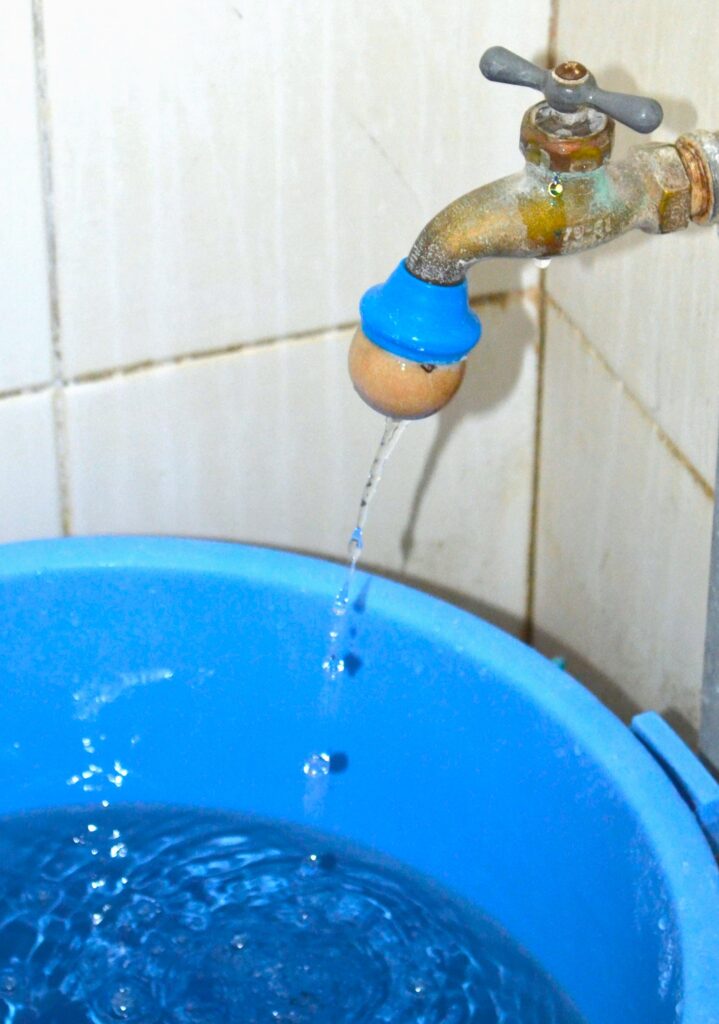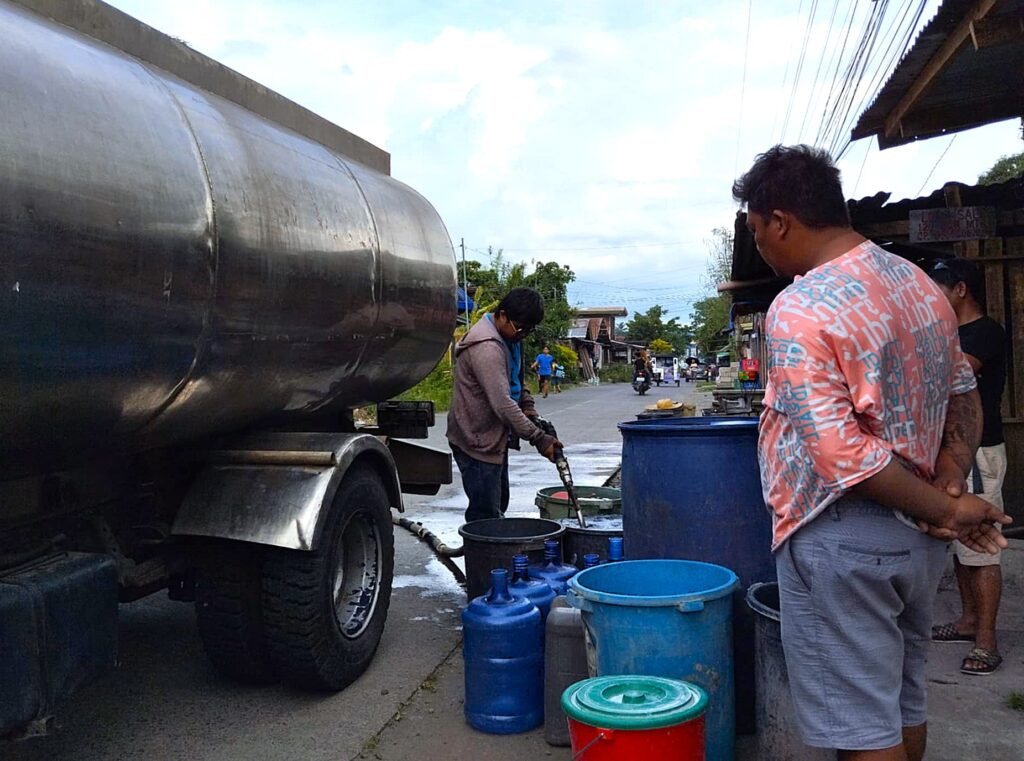Is the water you’re drinking safe?
Text and Photos by Henrylito D. Tacio
“Water is the most critical resource issue of our lifetime and our children’s lifetime. The health of our waters is the principal measure of how we live on the land.” – Luna Leopold, American hydrologist
***
How will you know the water is “good” or “good enough? In a study conducted by anthropologists Gideon Lasco of the Ateneo de Manila University’s Development Studies Program and Anita Hardon of Wageningen University’s Knowledge, Technology, and Innovation Group, it was found that, among ordinary people, seeing – and tasting – is believing.
The two researchers discovered that Filipinos predominantly depend on their personal sensory perceptions of water – such as its color, taste, and smell – to assess its quality. For example, while clear water is perceived as safer than turbid water, clear water that has a rusty taste is regarded as less desirable than water that tastes sweet.
Moreover, the researchers emphasized that individuals perceive water quality as fluid and subject to change based on present and forthcoming conditions: a recent typhoon may render the water murky for several days, yet it is anticipated to gradually clear and improve over time.

Lasco and Hardon carried out a qualitative investigation into the communities situated along the bustling Marikina River, the largest tributary of the Pasig River. They focused on the daily experiences, practices, and perceptions of local residents regarding water quality.
Over a period of four months, the two examined the interactions between humans and water in these communities. Their research involved tracing the river upstream and conducting interviews with individuals who consume water, as well as those involved in its distribution and regulation, particularly from low- and middle-income backgrounds.
“First, we describe the sensorial and cognitive attributes that people associate with the different water sources in their environment, as well as their decision-making regarding what kind of water to use for which purposes,” the two researchers explained.
“Second, we present the ‘making’ of water quality: how, in a context of polluted environments and water scarcity, do people try to secure water they consider acceptable for themselves and their families,” they added.
The two researchers also found that access to clean water is significantly affected by social and economic conditions. Urban communities located downstream of the Marikina River have the financial means to depend on water-refilling stations and bottled water, despite the high costs involved. In contrast, communities situated upstream rely on natural sources such as springs, which pose potential contamination risks.
Additionally, although the privatization of the water distribution system has increased overall access to water, many low-income and upstream communities continue to experience inconsistent access to piped water.
In their study, Lasco and Hardon advocate for the incorporation of local experiential knowledge regarding water quality into policies governing water purification and distribution. They emphasize that individuals primarily define “good” water through their sensory experiences. This consideration is especially vital when addressing contamination issues related to microplastics, which are typically colorless, tasteless, and odorless.
Next to air, water is the element most necessary for survival. Water makes up more than 60 percent of our body weight. Proteins make up only 18% while fats encompass 15%, minerals 4%, carbohydrates 2% and vitamins less than one percent.

The brain contains 74% water, blood contains 83% water, lean muscle has 75% water and bone has 22% water. A lack of water affects everything from the digestive tract to the immune system. It also helps regulate body temperature.
Water is finite. “World demand for water doubles every 21 years, but the volume available is the same as it was in the Roman times,” observes Sir Crispin Tickell, former British ambassador to the United Nations and one of the organizers of the 1992 Earth Summit. “Something has got to give.”
Around the globe, water tables are falling, underground aquifers are being depleted, lakes are shrinking and wetlands crucial to the survival of plants and wildlife are drying up. But despite all these, the international community ignored the signs.
If you look at the Earth’s surface from outer space, it is covered by water. But the majority of this enormous volume is ocean saltwater that is unsafe for human ingestion. The United States Geological Survey estimates that 97.2% of the 326 trillion gallons of water surrounding the planet is made up of the oceans.
This leaves freshwater to make up just 2.5 percent of all the water on Earth. Freshwater, which may be found in lakes, reservoirs, and glaciers, is essential to life and is vital to the continued existence of human civilization. Freshwater is the source of drinkable water.
However, the drinkable water that comes out of your faucets represents just 1% of all freshwater that is readily available. To put this figure into perspective, the amount of easily available freshwater would only equal 15 milliliters, or one tablespoon, if all of the world’s water could be placed into a 3.8 liter (one gallon) container.
Even the tiny quantity of drinkable water contained in this symbolic tablespoon is quickly running out these days. There are many reasons, but some of the most well-known ones are overcrowding, pollution, excessive human waste, and rapid evaporation brought on by dramatic climate change.
“The Philippines will likely experience severe water shortage by 2040 due to the combined impact of rapid population growth and climate change,” predicts the Washington, D.C.-based World Resources Institute (WRI).
Of the 167 countries surveyed by WRI, the Philippines ranked 57th among those which were highly vulnerable to severe water shortage. In Southeast Asia, the Philippines ranked second lowest in terms of per capita water availability per year with only 1,907 cubic meters.
Most of those affected are highly urbanized areas. Even before the WRI survey, a study done by the Japan International Cooperation Agency identified at least nine major cities described as “water-critical areas.” These were Metro Manila, Metro Cebu, Baguio, Angeles, Bacolod, Iloilo, Cagayan de Oro, Davao, and Zamboanga.
The situation is nothing new. At the beginning of the twenty-first century, the world was already facing a serious water crisis. All the signs suggest that it is getting worse and will continue to do so unless corrective action is soon taken.
“Today, we withdraw water far faster than it can be recharged – unsustainably mining what was once a renewable resource,” deplores Janet Abramovitz, a researcher at the Washington, D.C.-based Worldwatch Institute.

“Water, not oil, is the most precious fluid in our lives, the substance from which all life on the earth has sprung and continues to depend,” wrote Maryann Bird in a Time feature.
Water is even more expensive than gold. “Water is worth more than gold and necessary for survival above all other resources on earth,” pointed out a feature published in the defunct South Review.
If the world runs out of oil and other fossil fuels, there are always alternative energy sources. People can live without the precious gold. But without water, the world is outright doomed.
“I do not want to be called the Prophet of Doom, but it pays to listen to concerned quarters who have been warning us that one of the fiercest battles in the future is on water,” said former Senator Franklin Drilon during the First International River Summit held in Iloilo City in 2012.
In Davao City, to help solve the problem, the Davao City Rainwater Ordinance of 2009, was signed by then Mayor Rodrigo R. Duterte. It recommends saving rainwater through harvesting.
“The proper harvesting, storage and utilization of rainwater would reduce the effects of stormwater and surface runoff and siltation, that will contribute in the reduction or mitigation of flooding, soil erosion, deposit of silt loads on local roads and rivers, non-point source pollution in urban areas, and improve the quality of surface water,” the ordinance explained.
“Davao City receives an average of 2,628 milliliters of rain per year,” stated the Interfacing Development Interventions for Sustainability (IDIS). “Even during a typical dry season, the city receives a minimum of 2,000 milliliters of rainfall, ensuring the city of at least 100,000 liters of rain if only harvested by a typical 50 square meter roof catchment.”
Some institutions have been doing rainwater harvesting. Prior to the enactment of the ordinance, the San Pablo Parish in Juna Subdivision implemented its own rainwater harvesting system as early as 2004. This facility includes four tanks dedicated to collecting rainwater. The harvested water is utilized for irrigation, general cleaning purposes, and toilet flushing. Additionally, the parish provides water supply to nearby communities and chapels within its jurisdiction.
Davao Christian High School, located at the V. Mapa Campus, is engaged in the collection of rainwater, which is stored in a cistern tank as well as in three tanks, each with a capacity of 20,000 liters. This harvested rainwater is utilized for flushing toilets. The facility for rainwater harvesting is equipped with sophisticated sensor systems designed to promote water conservation.
IDIS reported that in 2016, Davao City’s demand for all types of water was reported at 108,358,841 cubic meters. It is projected to reach 164,392,803 cubic meters by 2031.
“Over the years, the city has wasted millions of valuable free rainwater because of Dabawenyos’ dependence to a more accessible high-quality water supply extracted from groundwaters,” IDIS deplored.

